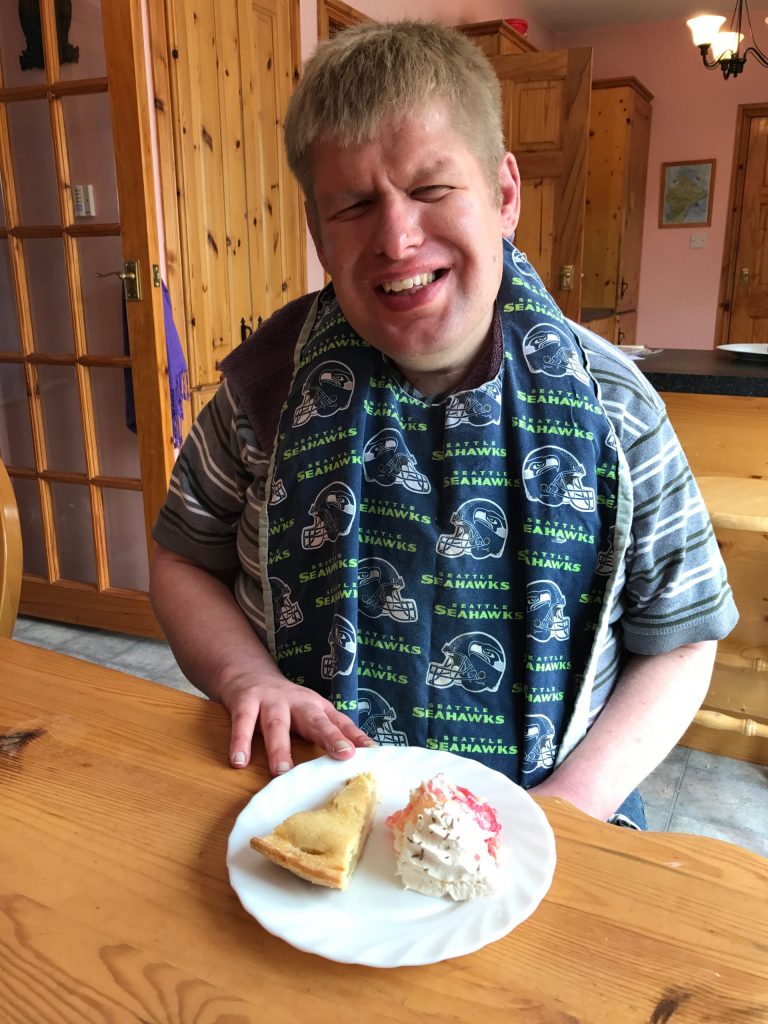Nick was about seven when he finally gained the skills to feed himself. It was a long road, but he finally got there. He spent many years, three meals a day, eating food that was pureed in a blender. It was the only consistency he could manage to swallow without choking. Then he graduated to oatmeal. He ate that for years too. After years of intense therapy he gained the skills to bite and chew food. It was a huge accomplishment that has made a tremendous difference in his life and ours as his caregivers. That was over 30 years ago.
A couple of years ago he began eating blended soups again. He has always liked ice cream and pudding, but he still doesn’t like to eat oatmeal no matter how much brown sugar we put on it. It is interesting to watch him eat his meals. The food can’t touch each other on the plate. Each flavor must be eaten separately. We don’t know why, but Arden thinks that it has something to do with the fact that we would throw all of his food into the blender, mix it up, and feed it to him. Arden says that if you have never seen a Thanksgiving dinner all in a blender, you are missing something. It really was something. Anyway, we probably scarred Nick for life concerning his food.
So the food is all separate on the plate and he looks it over before he begins eating. Then he will completely eat one thing before moving onto the next food. We noticed over a period of time that he would start with the things that he liked the least with the meal culminating with eating the food that he likes the best. He saves the best for last.
As I have thought about this, I realized that it is human nature to consume the favorite things first. We want to put off the things we don’t like and we gravitate to the things we prefer. Nick doesn’t do that. He moves through the things that aren’t as pleasant and saves the favored food for the end of the meal. Often he will sit there for a few moments after finishing the other items before he begins eating the last thing. It’s as if he is savoring the anticipation of the best part of the meal. The last thing is not always what I would expect him to choose. Sometimes it is broccoli. Arden and I will often ask each other, “I wonder what the best will be today.”
As I observed Nick doing this, it has made me realized that if I give myself little rewards by saving the best thing for last, I can move more easily through things I don’t like as well. It works with more things than just food. This is a good way to deal with tasks that I don’t particularly like doing. Using Nick’s technique for choosing, helps me avoid procrastination. I have a treat coming when I finish what is in front of me.
Try it, see if it works for you too. Look at the things in front of you to do, choose which one you like the best. Make it your reward. Keep the visual of it in front of you while you move through doing the things you don’t like as well. Then pause before receiving your treat. Recognize that you have saved the best for last. It really does help. Let me know what you think.
If you know someone else who loves someone with a disability and would benefit when this book comes out, please share this with them. In order to get a book agent and work with a publisher, I need to increase my readership of this blog. If you want to get a copy of this book as soon as it is available, click here to sign up.


